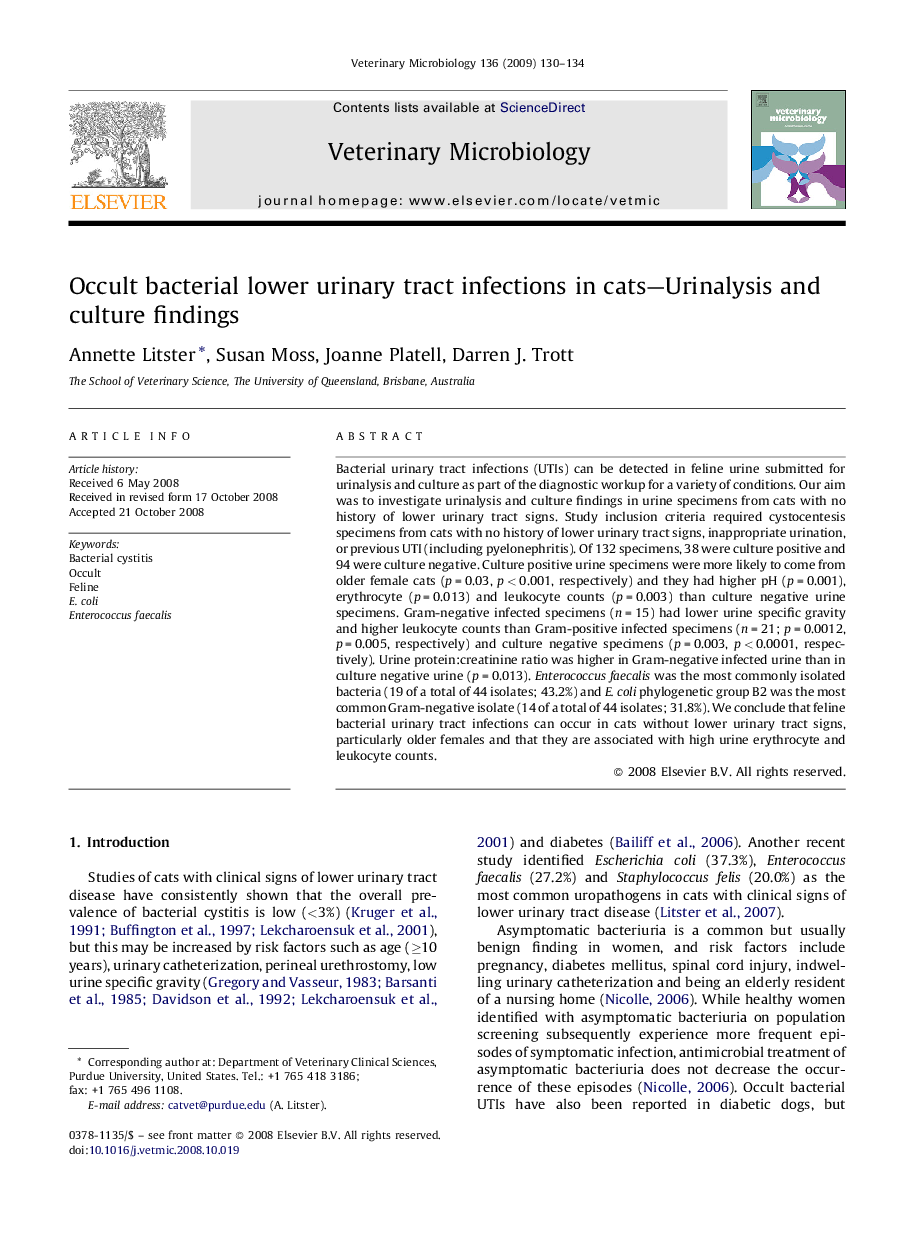| Article ID | Journal | Published Year | Pages | File Type |
|---|---|---|---|---|
| 2468197 | Veterinary Microbiology | 2009 | 5 Pages |
Bacterial urinary tract infections (UTIs) can be detected in feline urine submitted for urinalysis and culture as part of the diagnostic workup for a variety of conditions. Our aim was to investigate urinalysis and culture findings in urine specimens from cats with no history of lower urinary tract signs. Study inclusion criteria required cystocentesis specimens from cats with no history of lower urinary tract signs, inappropriate urination, or previous UTI (including pyelonephritis). Of 132 specimens, 38 were culture positive and 94 were culture negative. Culture positive urine specimens were more likely to come from older female cats (p = 0.03, p < 0.001, respectively) and they had higher pH (p = 0.001), erythrocyte (p = 0.013) and leukocyte counts (p = 0.003) than culture negative urine specimens. Gram-negative infected specimens (n = 15) had lower urine specific gravity and higher leukocyte counts than Gram-positive infected specimens (n = 21; p = 0.0012, p = 0.005, respectively) and culture negative specimens (p = 0.003, p < 0.0001, respectively). Urine protein:creatinine ratio was higher in Gram-negative infected urine than in culture negative urine (p = 0.013). Enterococcus faecalis was the most commonly isolated bacteria (19 of a total of 44 isolates; 43.2%) and E. coli phylogenetic group B2 was the most common Gram-negative isolate (14 of a total of 44 isolates; 31.8%). We conclude that feline bacterial urinary tract infections can occur in cats without lower urinary tract signs, particularly older females and that they are associated with high urine erythrocyte and leukocyte counts.
